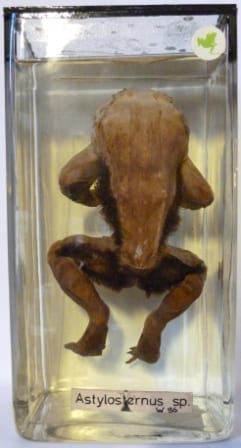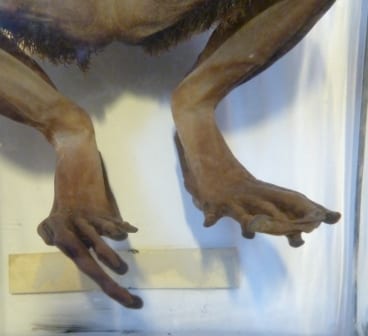Specimen of the Week: Week 119
By Emma-Louise Nicholls, on 20 January 2014
 This specimen needs no introduction but as I need a short paragraph to entice you in, I shall tease you with some enigmatic facts. This species has an intense and masochistic defense mechanism that belongs in a Hammer Horror film from the 1950’s. Its biology seems as otherworldly as the green blood of a Vulcan. Its name may surprise you, but do not be misled, this creature is a Pandora’s box of delicious and disturbing facts. This week’s Specimen of the Week is…
This specimen needs no introduction but as I need a short paragraph to entice you in, I shall tease you with some enigmatic facts. This species has an intense and masochistic defense mechanism that belongs in a Hammer Horror film from the 1950’s. Its biology seems as otherworldly as the green blood of a Vulcan. Its name may surprise you, but do not be misled, this creature is a Pandora’s box of delicious and disturbing facts. This week’s Specimen of the Week is…
**The hairy frog**
1) I know, I know, you’re all sitting there thinking, “That’s crazy, hair is clearly a synapomorphy of the class Mammalia and Trichobatrachus robustus is clearly far too far phylogenetically removed from any mammalian taxonomic group to be capable of evolving hair. Unless is it homologous?” That is what you were thinking, right? Don’t panic, or let the foundations of natural science fall down around you, let me help. The hairy frog is a West African species of amphibian, that has papillae, which are basically modified gills, projecting from the body into a structure that resembles hair. Hence it’s name. Now breathe, all is right with the phylogenetic world. As right as it was before at least. Which isn’t very right at all now I think about it. I digress.
2) The hairy frog grows to just over 10 cm in length, with males outgrowing the females. It is only the males that have the papillae (‘hairy’ bits mentioned above), that give the species its common name. It is also known as the horror frog, but to discover the reason behind that nickname, you’ll have to keep reading. Believe me, it’s worth it.

This illustration of the hairy frog is
from the Proceedings of the Zoological
Society of London, 1901, by J. Green.
3) The papillae are only present during the breeding season. They are a response to the increased need for oxygen that results from the increase in… err… ‘activity’ in the frog’s daily schedule throughout the period of offspring making. All frogs can breathe through their skin but the papillae serve to increase the normal surface area, which in turn increases the oxygen intake.
4) Hairy frogs are primarily insectivores that feed upon millipedes, arachnids and insects. In Cameroon, humans hunt them for food. They are killed with spears or machetes, and roasted. Allegedly, the people of Cameroon traditionally believed that the hairy frog falls from the sky and that if a couple with no offspring consume the frogs, they will become fertile (the people.)
5) The most interesting and grotesque fact about the hairy frog is that it snaps its own finger bones and pierces the flesh with the broken tips which protrude through the skin on the toe-pads to resemble claws. WHAT?? Some species of salamander also exhibit this masochistic type of behaviour- they break their own ribs and force them outwards through their skin to produce protective barbs. Wowsers. It has been observed that the bones retract back into the flesh when the frog no longer needs them, though to what extent the process is reversible, is unknown.
Emma-Louise Nicholls is the Curatorial Assistant at the Grant Museum of Zoology
One Response to “Specimen of the Week: Week 119”
- 1
 Close
Close




[…] Hairy frogs […]